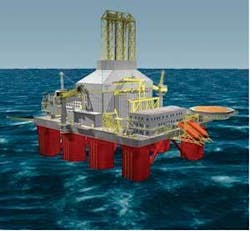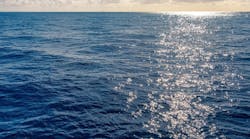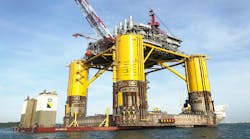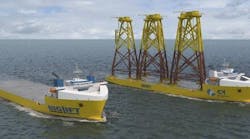Nick Terdre, Contributing Editor
Aker Kvaerner has moved back into the front line of drilling rig design with the launch of the H-6 concept. This sixth-generation design has been specifically developed for operation in the most extreme conditions, whether ultra deepwaters or extreme climatic conditions - or both.
In earlier days, as separate companies, both Aker and Kvaerner played prominent roles in developing the semisubmersible concept, for application both to drilling rigs and production platforms.
The first two H-6 units have been ordered at a cost of NOK 7.6 billion ($1.2 billion) by Aker Drilling ASA. The company was established last year by Aker ASA, which is the leading shareholder, controlling 35.3% of the shares. Aker ASA is also the majority owner of Aker Kvaerner. The rigs are being built to the H6-e design, where ‘e’ indicates that they will be prepared for outfitting for operations in extreme environmental conditions.
On Aker Kvaerner’s side the main contract party is Aker Stord, which is responsible for project management, deck construction, deck/hull mating, topsides assembly, and commissioning. Other companies in the Aker Kvaerner group are also contributing:
- Aker Kvaerner Engineering & Technology is performing detailed topside engineering
- Aker Kvaerner MH is supplying the drilling equipment, including the dual derrick RamRig
- Aker Kvaerner Elektro will perform electrical installations
- Aker Kvaerner Verdal is responsible for management of the hull delivery.
The project is a demanding one both in terms of schedule and budget, according to project manager Jens Christian Halling.
“This is a fast-track project,” Halling says. “Following the arrival of the hulls at Stord in July 2007 and March 2008, we have five to six months to get the rigs ready for sea trials. In this period we will install 4,000 tons of equipment and assemblies. It’s been hard work but so far we’re up with the schedule.”
The contract is a lump-sum one, so Aker Kvaerner bears the financial risk. Volume steelwork such as deck sections has been subcontracted to yards in Poland and Spain. The 15,000-ton hulls are being built at Dubai Dry Docks. They might have been built at Aker Kvaerner Verdal, but the yard did not have sufficient spare capacity.
The project execution model is similar to that used for the Kristin production platform delivery to Statoil, for which Halling was also the project manager.
“The model defines certain steps and certain maturity levels we have to reach before proceeding further,” he says. “The methodology that in general is used for mechanical completion and commissioning has been brought into the system definition and engineering. So as we reach certain phases we verify the completion of the different packages and evaluate whether it’s all right to proceed. This way we know there won’t be any unwelcome surprises further down the road.”
The rigs have a massive displacement of 64,500 metric tons and deck dimensions of 90 x 70 m. These features will help ensure good motion characteristics in heavy seas. With a variable drilling load of more than 7,000 metric tons, they can carry much more equipment than most other rigs. This gives them a high degree of logistical independence, which is necessary for cost-effective operations in the remote areas where present-day drilling frontiers are located. The rigs will be able to operate in ambient temperatures from +95° F (+35° C) down to -20° C (-4° F).
The large quarters capacity - 140 single-bed cabins - makes it possible to accommodate many additional service personnel who would otherwise have to be flown in when required, putting operations at the mercy of transport disruptions.
Fitted with full DP 3 capability, the rigs can operate in water depths of 10,000 ft, and drill to 35,000 ft.
Aker Drilling adding personnel
While it follows closely the construction of its first two rigs, Aker Drilling is gearing up to become a fully fledged drilling contractor. Headquartered in Stavanger, the company is seeking 350-400 personnel for its operations organization.
“We’re focusing on building the organization and recruiting,” says CEO Geir Sjøberg. “We’ve had a very positive response to our recruiting drive - there are a lot of personnel with the relevant experience wanting to work for us.”
Marketing of the rigs has also gone well. “The reception in the market has been very positive, both with respect to the rigs’ technical capabilities and the progress of the project,” says Sjøberg. “In general there’s a big push in the market for very deep waters, and also for the northern areas and other environmentally challenging parts.”
“As the rigs will be certified for operation on the Norwegian continental shelf, we’re not limited to one specific market - the world is our market,” says Sjøberg. “These are rigs for the future. Not only will we have two of the earliest of the newbuild units out there, it’s also the case that not so many of the others have been designed for operation in extreme conditions.”
Last autumn Aker Drilling raised NOK 2.5 billion in equity through a share issue and NOK 800 million through a convertible bond loan. Together with bank loan offers of up to NOK 5 billion, the company, which is listed on the Oslo Stock Exchange, has secured ample funding for its first two rigs.






